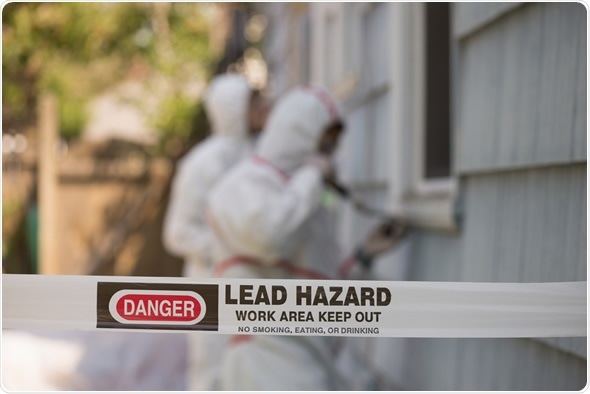What Causes Lead Poisoning?
Lead is a toxic metal that occurs naturally in the Earth’s crust, but its use in activities such as mining, smelting and the burning of fossil fuels has contaminated the environment, leading to human exposure and public health problems in various parts of the world. Lead is also a key component in paint, pigments, gasoline, ammunition, batteries, stained glass, solder, roofing materials and some cosmetics and medicines.
Lead poisoning refers to when lead accumulates in the body and causes severe health problems. The accumulating lead is distributed to and stored in the brain, kidneys, liver, bones and teeth. Even very small amounts can lead to problems and at very high amounts, it can cause death. Lead exposure is determined by measuring the amount of lead in the blood and no known level of lead exposure is regarded as safe.
Children under 6 years of age are particularly vulnerable to the toxic effects of lead poisoning, which causes profound and permanent problems, particularly ones that affect brain development and the nervous system. Children of this age are particularly vulnerable to lead poisoning because they absorb up to five times more lead when exposed than adults do. Hand-to-mouth behaviors among this age group also increase the risk of objects containing or coated in lead being swallowed. In adults, lead poisoning can also lead to long-term health issues, including hypertension and kidney damage.
During pregnancy, lead is released from bone into the blood, which is a source of exposure to the fetus. Pregnant woman who are exposed to high lead levels are at an increased risk of miscarriage, stillbirth and premature birth.
Lead Paint
The use of lead paints in homes or in the manufacture of children’s toys or home furniture has not been allowed in the US since 1978. However, the lead paint that is still found in the walls and wood of old buildings is a source of exposure. In children, lead poisoning mainly occurs as a result of eating chips of paint that contain lead.

Water Pipes and Lead-Soldered Cans
Tap water that has passed through lead-based pipes or pipes soldered with lead may contain lead . Food cans soldered with lead have been banned in the US, but are still used in certain countries and lead may therefore be found in some imported canned goods.
Traditional Medicines
Certain traditional medicines may contain lead:
- A peach-colored powder called litargirio, which is used as a deodorant, particularly in the Dominican Republic.
- The Hispanic remedy greta or azarcon. This is an orange powder, also known as sea coral, that people take to treat abdominal problems such as diarrhea and stomach upset.
- A brown powder called ghasard, used in India as a tonic.
- A Chinese remedy called ba-baw-san, used to treat the pain babies experience when they have colic.
- Daw tway, which is used in Thailand to aid digestion.
Other Sources
Other substances that may contain lead include soil on which lead particles from paint or gasoline may have settled; the glazes used for certain ceramics and porcelain and household dust that may contain lead from contaminated soil or chips of lead paint.
Sources
- Mayo Clinic, Lead Poisoning, www.mayoclinic.org/…/con-20035487
- WorldHealth Organization, LeadPoisoningandHealth, http://www.who.int/mediacentre/factsheets/fs379/en/
Further Reading
- All Lead Poisoning Content
- Lead Poisoning in Children
- Lead Poisoning, Diagnosis and Treatment
- Lead Poisoning Pathophysiology
- Prevention of Lead Poisoning
Last Updated: Feb 26, 2019

Written by
Sally Robertson
Sally has a Bachelor's Degree in Biomedical Sciences (B.Sc.). She is a specialist in reviewing and summarising the latest findings across all areas of medicine covered in major, high-impact, world-leading international medical journals, international press conferences and bulletins from governmental agencies and regulatory bodies. At News-Medical, Sally generates daily news features, life science articles and interview coverage.
Source: Read Full Article
